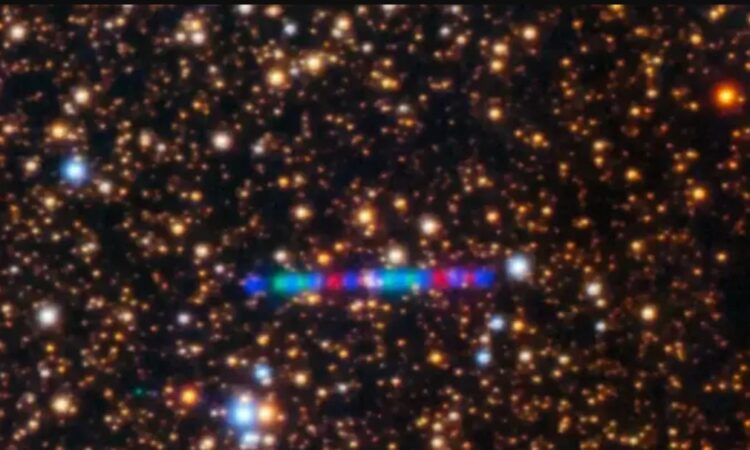Scientists reveal exact date mysterious object that Harvard scientist claims is ‘not natural’ will be closest to Earth

NASA scientists have been carefully watching a strange comet moving through our solar system for many months. This object has drawn a lot of attention because one Harvard researcher believes it might not be a natural object at all, and that possibility has made scientists around the world very curious. After months of study, experts have now revealed the exact date when it will come closest to Earth.
The comet is known as 3I/ATLAS, and it was first spotted in July by the ATLAS telescope in Río Hurtado, Chile, which is part of a NASA-funded project that scans the sky for asteroids and comets. From the moment it was discovered, 3I/ATLAS stood out because of how fast it was moving and the direction it was coming from. Researchers realized it didn’t come from anywhere near our Sun—it actually originated outside our solar system, in the vast space between stars. That makes it one of only three known interstellar objects ever observed by humans.
Scientists were able to tell it was interstellar because of its incredible speed. It’s moving at more than 41 miles per second, far too fast to be caught by the Sun’s gravity. This means it’s just passing through our neighborhood, cutting across the solar system before it continues back out into deep space.
At first, some people worried that 3I/ATLAS might be dangerous. It was even described as “possibly hostile” by some commentators, who feared it could cause damage if it came too close to Earth. But as scientists gathered more data, they were able to confirm that the comet poses no threat to our planet. When it reaches its closest point to Earth on December 19, 2025, it will still be around 270 million kilometers away, which is almost twice the distance from the Earth to the Sun. That is a very safe margin.
In fact, the comet has already passed much closer to the Sun than it will ever come to Earth. Just a few days ago, on October 30, it swung inside the orbit of Mars, reaching a distance of about 210 million kilometers from the Sun. Scientists have been following it closely as it travels along this path, and they’ve noticed something unusual—its color and brightness have changed significantly over time.
The comet has been getting brighter at a much faster rate than other comets that come from the outer regions of our solar system, like those from the Oort Cloud. This strange brightening has left researchers puzzled. Two experts, Qicheng Zhang from the Lowell Observatory and Karl Battams from the U.S. Naval Research Laboratory, wrote that they don’t yet know why it’s happening. They think it might be related to the comet’s extremely high speed and steep trajectory through space, or perhaps something unusual about what the comet is made of.
They also suggested that 3I/ATLAS might have unique characteristics in its nucleus—the solid core of ice, rock, and dust at its center. Its shape, texture, or chemical makeup could be very different from other comets we’ve seen, possibly because it formed in another star system under completely different conditions. Over millions or even billions of years, as it traveled across interstellar space, radiation and cosmic dust could have altered its surface, giving it new and unpredictable properties.
Because scientists still don’t have a clear explanation, they can’t yet predict what will happen after the comet passes its closest point to the Sun. It might stay bright for a while, it might continue to grow even brighter, or it could quickly fade away. The behavior of interstellar objects like this one is still a mystery since so few have ever been observed up close.
Researchers at NASA and observatories around the world plan to continue tracking 3I/ATLAS over the coming months. Every observation could reveal new clues about how the comet behaves and what it’s made of. If it truly has an unusual composition or origin, studying it could help scientists learn more about other star systems and how objects travel between them.
For now, 3I/ATLAS remains a fascinating visitor from beyond our solar system—an icy, fast-moving traveler carrying secrets from a distant part of the galaxy. As it approaches and then leaves, it will offer scientists a rare opportunity to study something that was born far from our Sun, giving us a small glimpse into the mysteries that lie beyond the familiar edges of our solar neighborhood.




